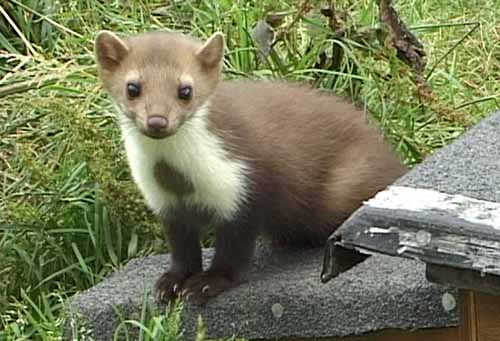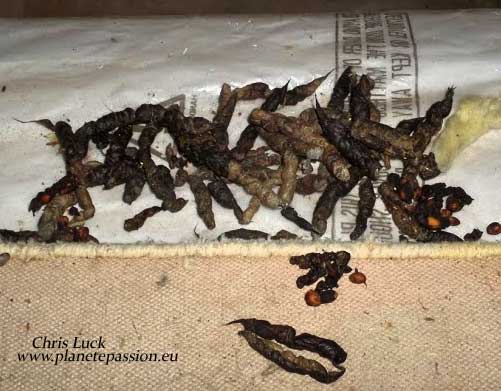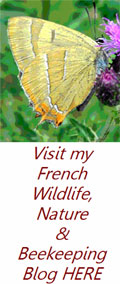Stone or Beech Marten
Martes foina
Fouine
Sometimes known as Beech Marten
the Stone Marten is widespread in most regions of France where there is adequate cover, buildings, trees or dense scrub. They can grow to 50 centimetres with about half as much again for the tail, their fur can be various shades of brown, usually dark or chocolate, possibly with a greyish tinge, white patch under the chin and top of the chest which divides in two running down each front leg, the size of this is variable.
There are many similarities shared by Stone Marten and Pine Marten. These are two extremely close species both in their visual characteristics and their overall behaviour, an attempt has been made to draw attention to the major differing characteristics. Additionally, although not an obvious feature, the ears of Pine Marten are more rounded.
Omnivorous and opportunistic in diet depending on the time of year, taking whatever is readily available. In summer and autumn they are predominately vegetarian eating berries, fruits, insects, small mammals and nuts. In winter and spring they tend to catch more live prey, small mammals, birds, young rabbits and hares, birds eggs and even earth worms will be eaten. Extra food is often taken when available and put in a “larder”, this is normally small mammals.
Considered to be nocturnal they will usually go out and come back to their current “home” several times each night, they are rarely observed during daylight hours. An individual Stone marten can have a home range of up to 80 hectares but this is extremely variable and usually only one or two habitual “homes” are used in a territory. They are very agile, excellent climbers but generally more terrestrial than Pine Marten.
Home for a Stone marten can be in a hollow tree, a fissure in a rock face or quarry, a pile of rocks, an underground tunnel or cave and most importantly for humans in a roof space, barn or other building where they often cause concern for the human occupants.
Breeding takes place in summer with a delay of some 250 days before implantation and pregnancy starting, the gestation has a duration of 30 to 50 days, this delay between copulation and the start of pregnancy allows the young to be born the following spring, when the mother gives birth to 3 or 4 young, there are frequent vocal exchanges between the mother and her young which will probably be clearly heard if they are in your roof.. If you should have them in your roof space, a method which is widely recommended to deter them and encourage them to move out is by scattering moth balls (boule de naphthaline) in and around the area they are using.
Excrement will often be found in one or several heaps near to where they are living, the form of this varies greatly with diet. Other examples of excrement can be seen HERE




